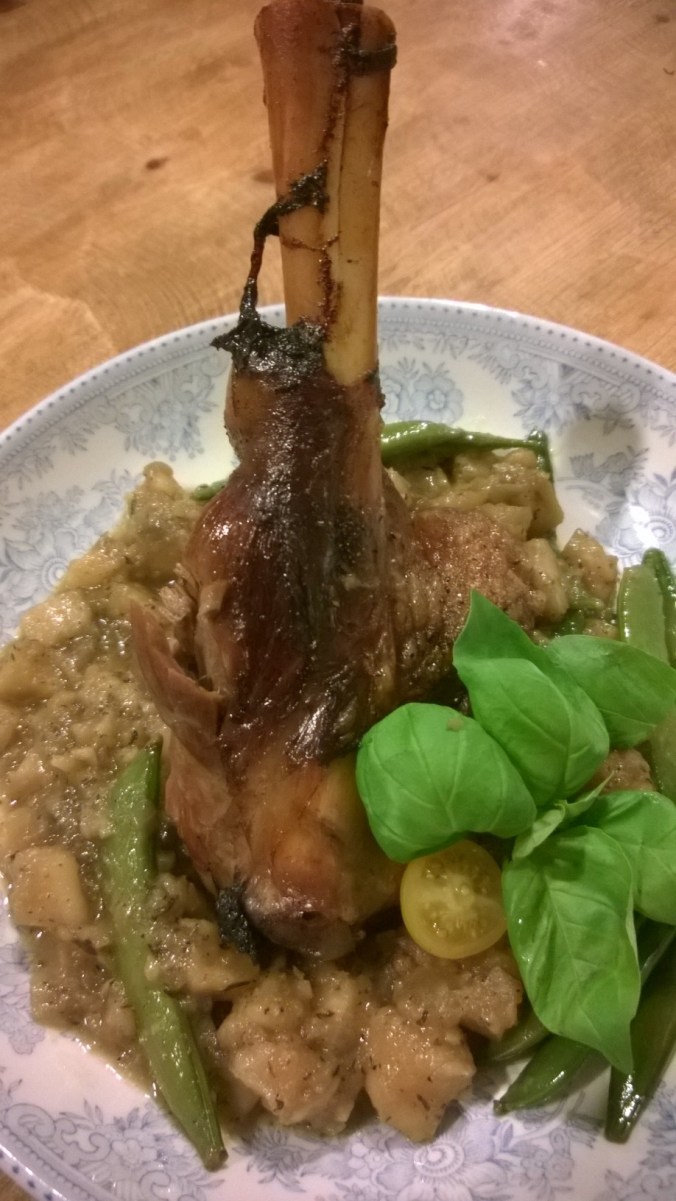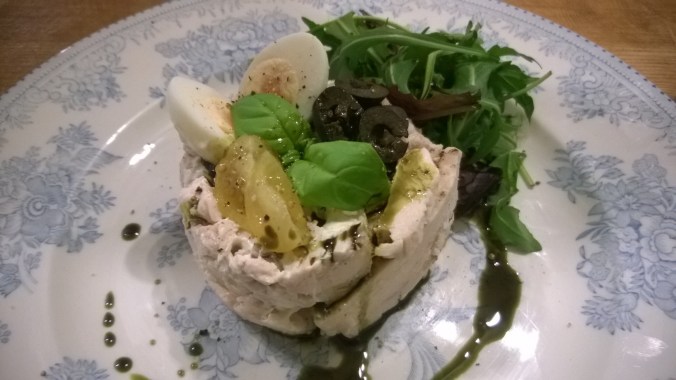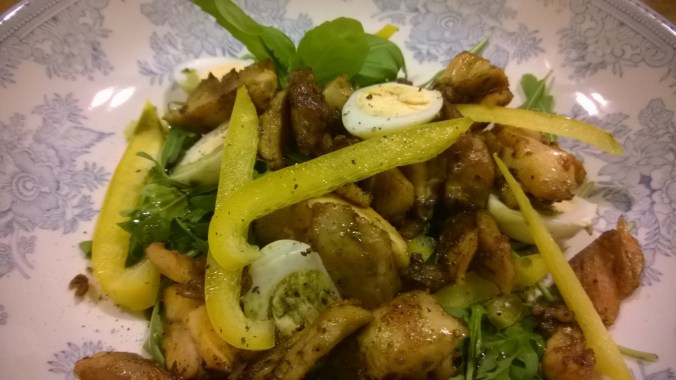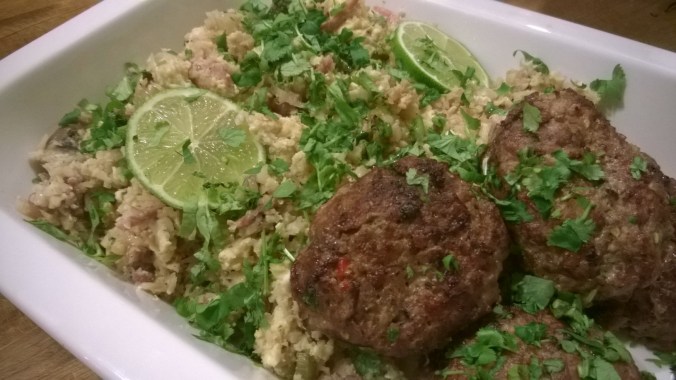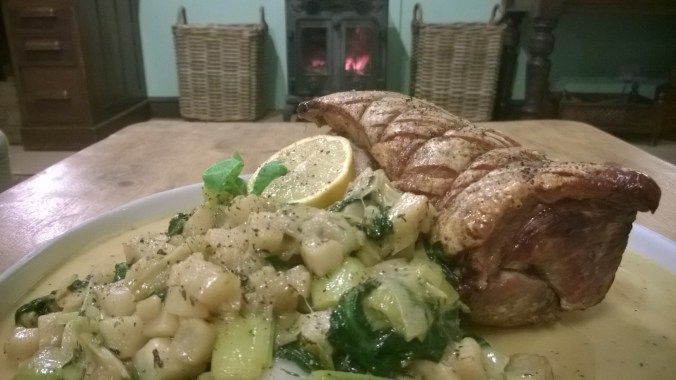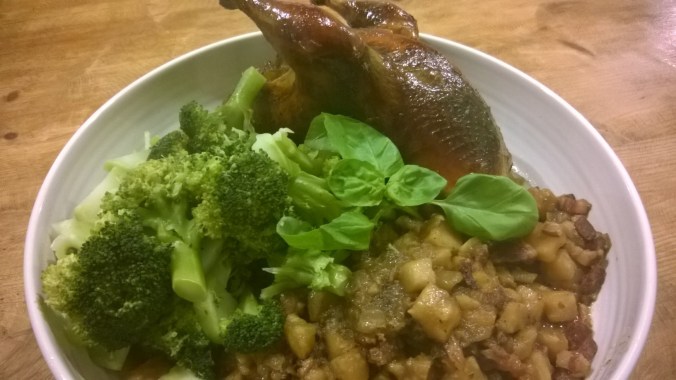Especially in Winter, with its long, dark evenings; sometimes all you want is something quick and easy, which in no way compromises on taste. Well this sweet chilli chicken recipe will certainly add a touch of hot and spicy ‘zing’ to a cold winter’s night! In fact, it’s a winner all year round!
This dish is incredibly easy to prepare and has that real ‘comfort food factor’, which we all crave at this time of year. Because it’s served with cauliflower-rice, it feels encouragingly substantial and filling; despite the fact it’s incredibly low in carbohydrate! The aubergine is by no means essential (I’m often accused of cooking enough to feed an army!); but I find the contrast between the fiery hot chillies and delicious mellow smoothness of the cheese & egg-plant a truly irresistible combination!
If you’re a regular visitor to this blog, you’ll know that cauliflower-rice is a much cherished staple of the low carb kitchen, and eggs are always brilliant on a low carb regime. In fact, the only real carb content in this dish comes from the cellular-carbohydrate locked up in the cauliflower itself. And with a net carb value of 1.5g per 100g, they’ll be no insulin-racking or impact to blood-sugars. As a result, diabetics and ketogenic-dieters needn’t hold back, neither should gluten-intolerants or those following a paleo-plan. Even if you’re not an adherent of any of these programmes, and simply want a ‘break from the bloat’ which carbohydrate often induces; I strongly urge you to give this recipe a try. You won’t be disappointed!
Start with your aubergine. Place a heavy-based pan on the hob and drizzle in a little oil, followed by a generous spoonful of butter. Slice the aubergine into rounds and sprinkle with salt. Sauté these in the hot oil for a couple of minutes each side, until the pale flesh starts to brown. Once cooked, lift these out of the pan and lay onto a baking-tray. Make sure to reserve your the pan to one side to cook your chicken! Top each aubergine-slice with a generous slice of hard cheese (cheddar or emmental would be perfect). Sprinkle lightly with herbs and then place into a medium oven for circa half an hour, until the cheese has melted to a delicious brown crust and the aubergine is velvety soft.
Now move onto your cauliflower-rice. Prepare this by blitzing the florets in a food-processor (precise instructions can be found under a separate post by clicking the following hyperlink:cauliflower rice). Once your cauliflower is chopped finely enough, transfer to one side whilst you continue with the chicken.
Return your pan to the hob and add a little more oil and butter. I’ve used cut breast-fillets for this dish, but you can equally use whole fillets, diced chicken-thigh or any other white meat such as turkey or pork. Whatever your choice, season the meat generously and then seal in the hot oil until each piece is a light golden brown and has started to caramelise.
I apologise in advance for constantly repeating myself, but if I can offer any words of advice, I feel honour-bound to do so. Do not fuss around with the meat in the pan or move it until it’s good and ready. No-one likes to be mothered; why do it to your dinner?! When the meat is ready to be turned, it will release itself of its own accord in response to the merest touch from a finger or wooden-spoon. If it sticks, it’s not ready. We want the meat to caramelise and brown; not steam! And do not crowd it in the pan or the same will happen! It’s such a shame to ruin food through ‘excess care’, when this is so easily avoided!
Once the chicken-fillets have sealed, add a chopped onion to the pan and a stick or two of finely sliced celery. Follow this with strips of pepper and a good crush of garlic (one to two cloves, however strong you like it!). Now sprinkle the lot with a generous shake of hot red chilli-powder and crumble in a chicken-stock cube. I’m always a fan of fresh ingredients, but sometimes their ‘dried counterparts’ possess their own unique properties, in preference over the fresh. In the case of chilli, the powdered form adds a pleasing colour to the dish and cooks down in an ‘earthy’ rustic way which enriches the sauce, both in terms of taste and texture. The dry powder also helps thicken the sauce, which the fresh form wouldn’t achieve.
Pour on a centimetre’s depth of water and season well. Add a squeeze of lemon juice and a teaspoon full of bake-suitable sweetener. Why sweetener? The heat of the chilli needs ‘calming and rounding’ a little. Sweetness lifts the taste and takes away any aggression left in the flavour. Make sure you don’t use table-top sweetener – this is not heat-stable and loses its sweetness with temperature. Xylitol is an excellent natural product, which I highly recommend for all uses. Leave this to simmer on a low heat for 5 minutes or so, whilst you cook your rice.
Sauté this in butter with a little olive-oil (so the butter doesn’t burn) for around four minutes. Taste to adjust the seasoning and check that the cauliflower is cooked through. We’re looking for tender, but still keeping its bite.
Whilst the rice is cooking, break four eggs into a bowl and whisk smooth. Now return to your wok and scrape the rice into a pile on one side. In the space you have cleared, drizzle in a little more oil then pour in the egg. Don’t stir it for a minute – we want to form autonomous clumps of egg. Only stir when the mixture in contact with the pan’s surface has had time to cook through. Then continue as per scrambled eggs. The reason you do it this way is to prevent the liquid egg from coating the rice and turning into an unattractive mess! If you simply poured the egg over the contents of the pan without clearing a space and cooking separately you’d just end up with a porridge-like mix, with no discernible clusters of egg – if this occurs, you may just as well not have bothered!
Once all is ready, pour your chicken and sauce all over the rice and form the cheesy aubergines into a pile on one side. Garnish the lot with fresh herbs and slices of lemon or lime for freshness. Then simply dig in! Truly sublime!
Browse this and other recipes by picture on my pinterest page: country walks in ketosis pinterest.
Thanks for reading and bon ap!
Adam.

